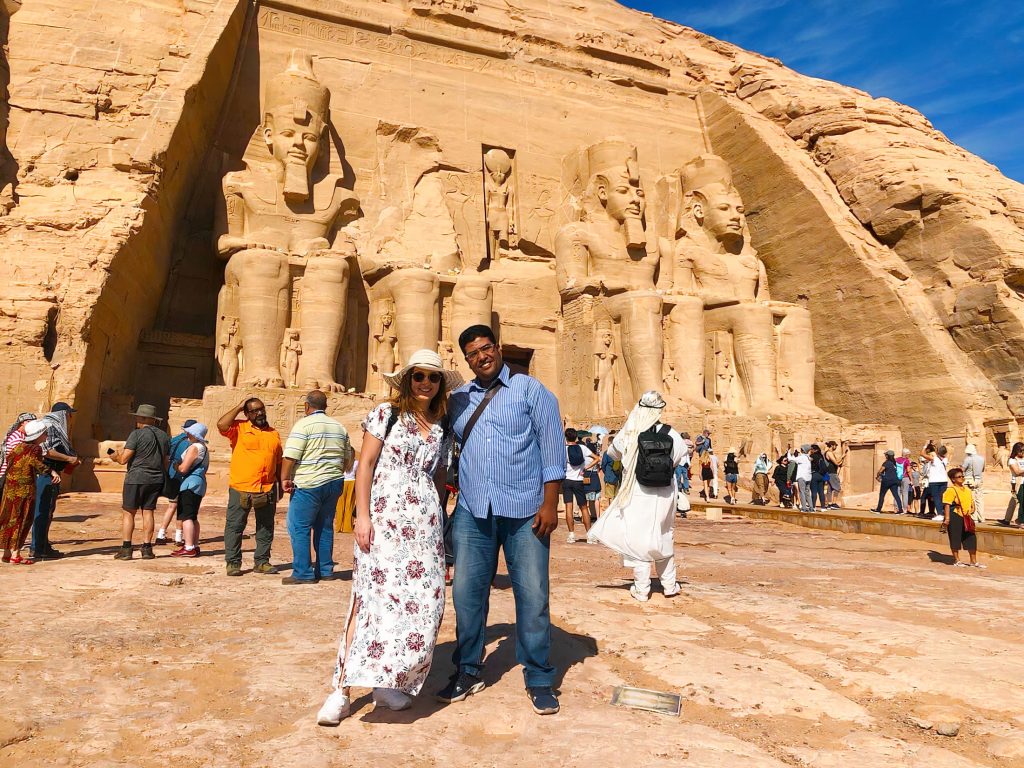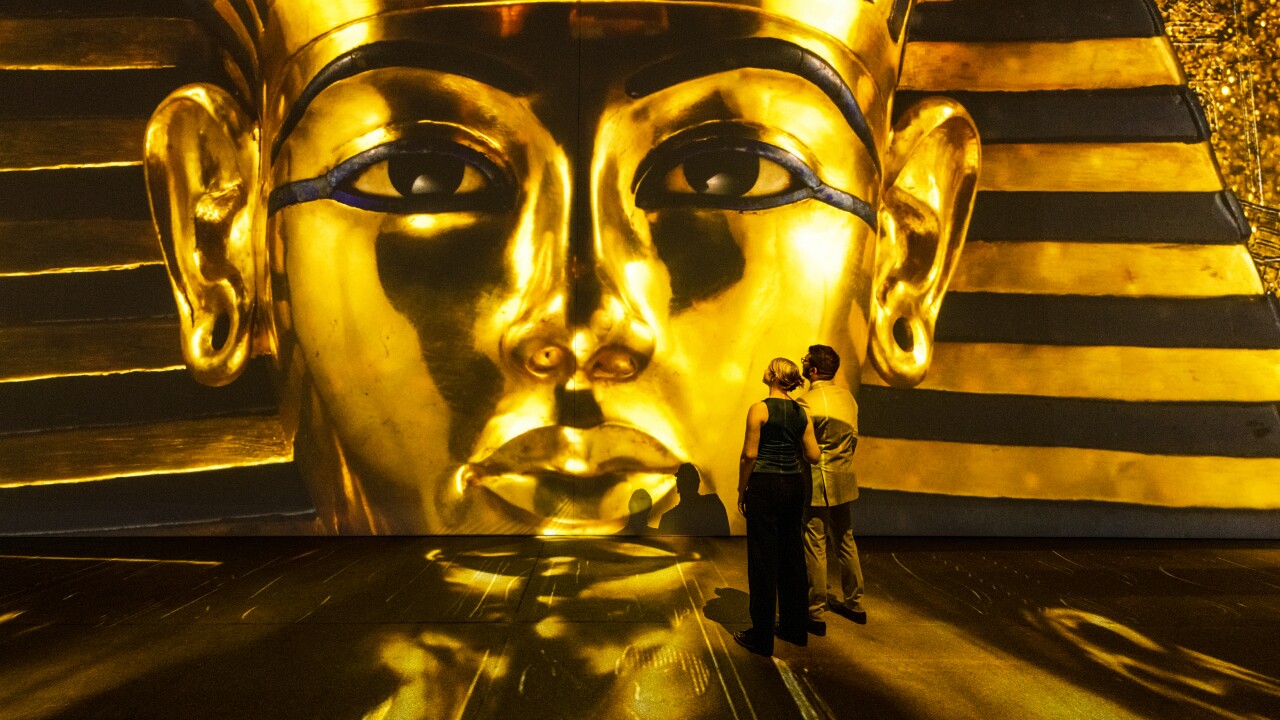
Amidst the vibrant city of Cairo, an extraordinary enclave known as the City of the Dead, or Al Qarafa, offers a unique blend of history, culture, and daily life. This sprawling necropolis is a testament to the enduring relationship between the living and the deceased, serving as a living monument to Egypt’s rich past and its cultural intricacies. In this thought-provoking blog post, we explore the fascinating history, cultural significance, and contemporary dynamics of the City of the Dead.
A Historical Tapestry: Al Qarafa has been a burial ground for centuries, with its history stretching back to the Islamic era. The necropolis houses tombs, mausoleums, and monuments that bear witness to the passage of time and the diverse cultures that have shaped Egypt’s history.
Life Among the Tombs: In a captivating blend of history and contemporary life, the City of the Dead has evolved to accommodate both the living and the deceased. Families have settled among the tombs, creating a unique symbiosis that bridges the realms of the living and the afterlife.
Community Spirit and Resilience: The residents of Al Qarafa have cultivated a sense of community that defies traditional notions of a necropolis. The living coexist with the departed, forming tight-knit neighborhoods that reflect the resilience, resourcefulness, and solidarity of those who call this place home.
Cultural Complexities: Al Qarafa serves as a microcosm of Egypt’s social and cultural complexities. It’s a place where ancient customs and traditions converge with contemporary challenges. The coexistence of life and death fosters a deep sense of respect for the past and a recognition of the importance of preserving cultural heritage.
Contemporary Challenges and Vibrancy: While Al Qarafa is rooted in history, it also faces modern challenges. The dynamic interplay between urbanization, poverty, and historical preservation highlights the delicate balance between maintaining tradition and adapting to change.
Historical and Spiritual Landmarks: Within the City of the Dead, there are architectural and historical landmarks that reflect its significance. Notable sites include the mausoleums of notable figures, the impressive Mosque of Sayyida Nafisa, and the unique cultural spaces that celebrate the heritage of the area.
A Lesson in Humanity: The City of the Dead offers a profound lesson in the shared human experience. It reminds us that life and death are interconnected, and that the essence of humanity extends beyond the constraints of time. The coexistence of joy and sorrow, life and death, encapsulates the complexity of the human journey.
Preserving Heritage and Community: Efforts to preserve the historical and cultural heritage of Al Qarafa are a testament to its enduring importance. Initiatives that focus on conservation, education, and community engagement are essential to ensuring that this living monument continues to thrive.
Conclusion
With our Cairo day tours, you have the chance to immerse yourself in this narrative and witness the city’s iconic landmarks come to life. Marvel at the majestic Great Pyramid of Giza, standing as a testament to the ingenuity of ancient civilizations. Gaze upon the enigmatic Sphinx, a guardian of secrets and mysteries. Traverse the alleys of old Cairo, where time seems to stand still, and explore the treasures of the Egyptian Museum, a repository of artifacts that whisper tales of bygone eras.

Make the most of your layover in Cairo with our exciting Cairo Stopover Tour. Experience the iconic landmarks of this ancient city, including the Pyramids of Giza, the Sphinx, and the Egyptian Museum. With convenient transportation, expert guides, and a well-planned itinerary, this tour ensures an immersive and unforgettable adventure in a limited time frame View Tour Details

Day Trip to Pyramids from Cairo
Embark on a captivating day trip to the Pyramids from Cairo and immerse yourself in the mysteries of ancient Egypt. Our carefully curated itinerary ensures an unforgettable experience as you explore the iconic Pyramids of Giza, Sphinx, and more. Join us on this remarkable journey and witness the grandeur of the ancient world View Tour Details

Day Trip to Abu Simbel from Cairo by Plane
Embark on a mesmerizing day trip to Abu Simbel from Cairo by plane and immerse yourself in the awe-inspiring wonders of ancient Egypt. Discover the monumental temples of Ramses II and Queen Nefertari, marvel at the intricate carvings and colossal statues, and learn about the rich history and legends that surround this UNESCO World Heritage Site. With convenient flights, expert guides, and hassle-free arrangements, our all-inclusive tour offers an unforgettable experience for history enthusiasts and adventure seekers alike View Tour Details

Day Trip to Alexandria from Cairo by Car
Experience the allure of Alexandria on a thrilling day trip from Cairo by car. Explore the rich history and cultural heritage of this enchanting coastal city, visit iconic landmarks like the Library of Alexandria and the Catacombs of Kom El Shoqafa, and immerse yourself in the Mediterranean ambiance. With the convenience of private transportation, expert guides, and a well-crafted itinerary, this day trip promises an unforgettable adventure for history enthusiasts and wanderers alike View Tour Details
Related Egypt Tours Blog

Step into the enchanting world of ancient Egypt at The Egyptian Museum. Home to a vast collection of artifacts, mummies, and treasures, this museum offers a unique opportunity to delve into the past. Join our guided tour to uncover the mysteries of mummies, marvel at Pharaonic treasures, and witness the beauty of millennia-old artifacts View Tour Details

Khan El Khalili Bazaar is a vibrant maze of alleyways, offering a sensory explosion of sights, sounds, and flavors. From traditional handicrafts and textiles to aromatic spices and tea houses, this bazaar captures the essence of Cairo’s rich cultural heritage. Our guided tour ensures you make the most of your visit, discovering hidden gems and engaging with local artisans View Tour Details
City of the Dead (Al Qarafa) FAQs
- What is the City of the Dead (Al Qarafa)? The City of the Dead, also known as Al Qarafa, is a vast historic cemetery complex located in Cairo, Egypt. It is a unique area where centuries-old tombs and mausoleums coexist with a living community.
- How large is the City of the Dead? The City of the Dead covers a substantial area, stretching for several kilometers. It includes a variety of neighborhoods, mausoleums, and tomb structures.
- Is the City of the Dead still in use for burials? Yes, the City of the Dead is still used for burials. Families with limited resources sometimes use the existing tombs for their deceased loved ones.
- Is there a living community within the City of the Dead? Yes, there is a living community within the City of the Dead. Some areas have been repurposed as housing for families, creating a unique blend of life and death.
- What is the history of the City of the Dead? The City of the Dead has a history dating back centuries. It evolved as a burial ground and later developed into a residential area as people settled near the tombs of their ancestors.
- Can visitors explore the City of the Dead? Visitors can explore certain parts of the City of the Dead, but it’s important to do so with respect and sensitivity to the local community. Some areas may be restricted.
- Are guided tours available for the City of the Dead? Yes, guided tours might be available for the City of the Dead. However, it’s important to choose tours that are respectful of the local community and its traditions.
- What can visitors see in the City of the Dead? Visitors can see a variety of tombs, mausoleums, and historic structures. Some areas might have old mosques, shrines, and vibrant local markets.
- Is the City of the Dead illuminated at night? The City of the Dead may not be widely illuminated at night, but the atmosphere can be quite different during evening hours. It’s advisable to visit during daylight for safety.
- Is photography allowed in the City of the Dead? Photography regulations may vary, but it’s recommended to ask for permission before taking photographs, especially in areas where people live.
- What is the relationship between the living community and the tombs? The living community in the City of the Dead often lives in close proximity to the tombs of their ancestors. Some families have repurposed tomb structures as homes.
- Are there any cultural events or festivals held in the City of the Dead? The City of the Dead might occasionally host cultural events, festivals, or religious gatherings that showcase the area’s unique heritage.
- Can visitors interact with the local community? Interacting with the local community should be done respectfully and with permission. Some residents might be open to sharing their stories and experiences.
- Is the City of the Dead accessible to people with disabilities? Accessibility might vary, and due to the historical and uneven terrain, there might be limitations in certain areas for people with disabilities.
- What transportation options are available to reach the City of the Dead? Visitors can reach the City of the Dead by various means, including taxis, public buses, and guided tours. It’s located within Cairo.
- What is the cultural and historical significance of the City of the Dead? The City of the Dead is a unique reflection of Egypt’s history, cultural practices, and the complex relationship between life and death. It holds insights into local traditions and beliefs.
- How can visitors show respect for the local community in the City of the Dead? Visitors should be mindful of the local community’s privacy, traditions, and daily life. It’s important to interact respectfully and ask for permission before taking photographs.
- Are there any guidelines for visitors exploring the City of the Dead? Visitors should be respectful, avoid entering private areas without permission, and refrain from disturbing residents or damaging any historic structures.
- What other attractions are near the City of the Dead? The City of the Dead is located near other historic sites and landmarks in Cairo, such as the Citadel of Cairo and the Khan El Khalili market.
- How does the City of the Dead contribute to Egypt’s cultural heritage? The City of the Dead contributes to Egypt’s cultural heritage by preserving centuries-old burial traditions, showcasing the interplay of life and death, and offering insights into local customs and community dynamics.

